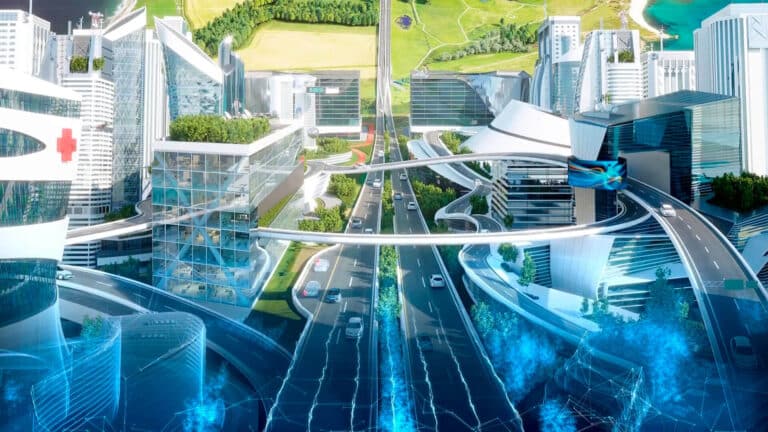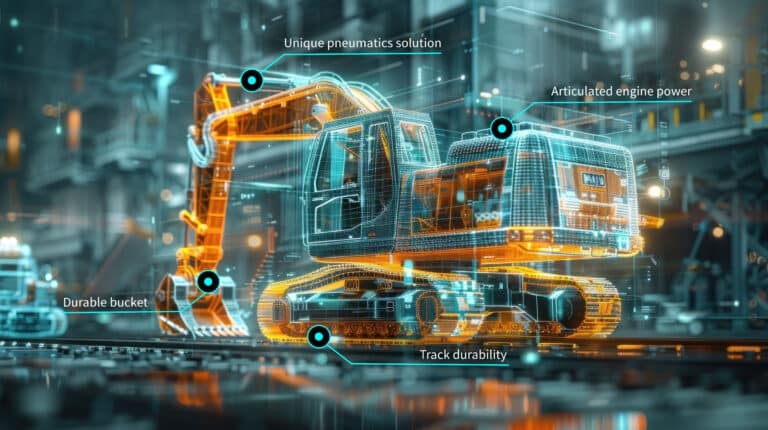Interactive and augmented reality solutions like TeamViewer’s Frontline and Intoware’s WorkfloPlus are transforming frontline work. Stereoscape’s Industrial XR Solutions Director Kenneth Korhonen talks about AR tools and argues that they are a natural extension of lean culture, helping create more autonomous and committed workers and ultimately creating value for organisations and their clients.
What’s been your career journey so far?
Following training as a pilot, I started working in a warehouse and worked my way up to management, designing production lines and warehouse layouts. I got interested in lean and started teaching problem-solving to others through Kaizen facilitation. When people began to understand the value that a lean mindset created, we gradually created a culture of continuous improvement. It also brought tremendous value to the company.
I was then headhunted to an oil and gas industry company in Germany, where I took on operational excellence responsibilities. We changed the organisational structure, created a lean programme and rolled it out on a global scale, training the lean coaches and putting in place huge improvements in terms of safety, quality, delivery, cost, and inventory. I was travelling to places like Italy where I lived for five years, Slovenia, Germany, Poland, Singapore. I built new production lines and put in place internal logistics to support manufacturing.
What does lean mean to you?
Lean is about respecting people and their time – and creating value for customers.
Often people associate lean with a cost cutting project, which it is not. It is about helping people succeed to create customer value. Giving people responsibility and the possibility to make a positive impact on their day-to-day work. Experts on the frontline need to be enabled to become individual thinkers and problem-solvers. Lean tools and XR help create structure that enables value creation.
Why did you start working with extended reality (XR) and augmented reality (AR) tools?
I’m always thinking about how to improve the quality of people’s working life.
Having trained hundreds of staff and trainers I was thinking “how can I do this more effectively”? I was thinking of virtual solutions already in 2016, wondering, if only there was a way to put a VR headset on the leaders’ heads, to show them what the shop floor could look like in the future, it would make my life much easier. Because I could bring that level of understanding to everybody much quicker. I wouldn’t have to go through hours, days, or months of explaining why… That is where XR technology can help.
I have been following the development of XR including frontline AR solutions and I wish I knew this all before. We could have saved so much more time and I could have worked so much more effectively by bringing knowledge to many more people if we’d have used extended reality. But the infrastructure hasn’t been there until now. I took a deep dive into XR and AR because I saw the massive potential behind these digital solutions.
How do AR tools add value to industrial companies?
When you have a lot of data available, it’s about how you utilise that data, and support the people that need that information, when they need it, and where.
80% of frontline workers traditionally would not have access to a computer at work – or a traditional computer would be too cumbersome to use. AR changes this, providing front-line workers fully integrated real-time support, work processes, and a computer screen in front of their eyes. With AR your hands are free to focus on doing the work.
Utilising augmented reality and other XR tools can also support the development of organisational culture, by bringing the decision-making to worker level. Lean, together with XR, brings structure, a culture of continuous improvement and learning, which creates an engaged, committed, and adaptive workforce. People want to succeed and do better every day.
Work becomes much more meaningful when you are trusted to think of better ways of working, to try and fail, and learn from these mistakes.
Why should industry be excited about AR-assisted frontline working?
The productivity gains are huge and far outweigh the initial costs of investing in these technologies.
There are huge gains related to actual physical work, such as time-saving; how the workflow is designed and how you can actually do the work so it’s uninterrupted by unnecessary things, when transferring from analogue processes to digital. Transitioning from physical checklists, work orders, instructions, reports and so on into digital workflows like vision picking utilising AR, remote expert connections, AI-assisted work, or automated reporting – the list of productivity gains is almost endless.
A digital workflow that appears on AR glasses allows you to get into work straight away, and the device guides you what to do next – how many products to pick, where to put them, how to scan it, it immediately goes into the system. Time is saved and the number of errors is lower. The process becomes more efficient, visual, ergonomic and less time consuming.
How do extended reality solutions such as VR and AR tools benefit training and induction?
The virtual experience is equivalent to learning by doing: it’s both engaging and effective, saving time and money and decreasing operational slowdowns or need to stop production for training. The cost of repetition is incremental, it’s safe to make mistakes in a virtual space, and learning retention rates are high. If you have a high employee turnover rate or high seasonal variation in employees – having AR assistance and digital workflows as guidance reduces errors and helps you get new workers up to speed quickly.
Because it’s digital, it’s also easily scalable, unlike in-person training methods. You don’t have to incur the cost of flying someone somewhere to train people. You can train people as you need to, where you need to.
Many larger industry leaders already have AR solutions in place.
There are several examples in the automotive industry, major logistics and warehouse companies, aerospace industry, electrical manufacturing and so on. These companies already use AR tools in their day-to-day operations. They’ve experienced the value, going from a pilot, to rolling out the solution across their operations.
You work with a platform for digital work processes called WorkfloPlus. Can you tell a bit more about it?
There are many great digital tools in the market, with each having their different strengths depending on where your organisation is at in terms of its digital maturity. When selecting the right mix of tools, we at Stereoscape can help by defining the needs and bringing the correct solution to your organisation, regardless of your maturity level.
Intoware WorkfloPlus is great if your organisation is at an earlier stage of transitioning from analogue to digital. You can get this tool up and running quickly and it has everything you need to streamline operations, standardise processes, and remove paperwork. WorkfloPlus allows you to easily convert your existing paper-based processes to be accessible via mobile, desktop and wearable devices.
WorkfloPlus has also proved valuable in inspection and compliance audits. Following digital instructions, workers can complete audits step-by-step, and then log when and by whom the process has been completed, upload photo or video evidence and share the data with customers.
Besides directly assisting the frontline worker, the solution facilitates additional activities, from managing teams through planning and scheduling work, to accessing work related data and generating fully automated reports – all on the same platform.
Another XR tool you work with is TeamViewer Frontline. What exactly does the solution offer?
Frontline offers a family of solutions for both more digitally mature organisations and those that are just embarking on the journey of digitising their operations.
xPick is a vision picking solution for internal logistics. Combined with AR glasses it enables workers to perform logistics processes hands-free, increasing their speed and minimising errors. xPick also offers a personalised employee experience through settings like different languages or qualification levels.
xMake provides manufacturing and assembly workers with step-by-step instructions directly in their field of view, making processes more efficient and safe. The tool also enables on-the-job training, helping solve seasonal work and employee turnover challenges.
xInspect brings information, checklists, and diagrams directly in front of workers’ eyes and enables hands-free working, immediate documentation, automated reporting, streamlined inspection and maintenance. Hazard warnings also make work safer.
xAssist provides remote support on smart glasses. The remote expert sees exactly what the technician on-site sees, reducing response times and downtimes and saving on travel costs.
Beyond assisted working and training, how does industry use extended reality?
Many companies use interactive and immersive XR to support their marketing and sales. At Stereoscape we also provide experiential and immersive services like virtual showrooms and gamified AR for marketing.
What advice would you give to organisations taking their first steps into AR-assisted working?
Just start! It’s as easy as that.
Frontline AR tools are simple to introduce, easy to integrate to backend systems and workers tend to take to it quickly. If you don’t start now, you’ll quickly find yourself at a disadvantage compared to competitors that are already on their way: The skills gap is growing and labour shortages are already impeding growth. You need new tools to improve productivity, speed up training and upskilling of workers and support them more effectively in the field.
Have the courage to try! We’re here to help.

